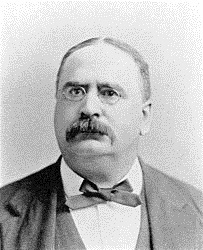
Welcome to Hemlock and Canadice Lakes!
Barns Businesses Cemeteries Churches Clinton & Sullivan Columns Communities Documents Events Time Line Fairs & Festivals Farm & Garden Hiking Homesteads Lake Cottages Lake Scenes Landscapes Library News Articles Old Maps Old Roads & Bridges Organizations People Photo Gallery Podcasts Railroad Reservoir Schools State Forest Veterans Videos
|
Reservoir News Article |
|
|
Contamination in Hemlock Lake and Concerns over a Proposed Railroad Line George W. Rafter - The Livonia Gazette February 1888 |
||
|
Professor Rafter read a paper before the Rochester Microscopical Society the other night, in which he presented some of the results of a year’s work in the study of the biology of the Hemlock Lake water supply. From this paper we learn that the total drainage area, exclusive of the surface of the lake itself, is about 26,000 acres, and of this it is estimated that from 18,000 to 19,000 acres are in cultivation. The geological formation of these bluffs is the Marcellus shale, and into this the basin of the lake extends to a depth of more than seventy feet. The only constant tributary is the inlet at the south end, and this brings the drainage of several miles of elevated valley lying to the south of the lake. The quantity of water flowing into the lake by the inlet is less than one-half of that flowing out at the outlet, from which it has been inferred that the permanent supply is derived from deep-seated springs. In confirmation of this view it has been noted that the water of the inlet is about three times as hard as the water of the lake itself, and that it further contains a larger percentage of organic matter. Professor Rafter regrets, as so, doubtless do Rochester people, the fact that there seems to be a gradually increasing contamination, and is forced to the conclusion that at the present time there can be found in Hemlock Lake water nearly every form of minute vegetable and infusorial life peculiar to the ponds, brooks and ditches of Western New York. In concluding his long and exhaustive paper Professor Rafter says: “In thus presenting to the notice of the academy the present sanitary condition of the water of Hemlock Lake, there is no intention of alarming either the members of the academy or the public. Indeed I do not consider the contamination as yet serious enough to be the cause of any real alarm. I do think, however, that the gradually increasing contamination which has been shown to exist is a matter of consideration by every citizen of the City of Rochester. Certainly the building of a railway to Hemlock Lake and the making of a public pleasure resort would be in the fullest sense a public calamity, and it cannot be possible that the eminent citizens who have advocated such a road really understand the tendencies of their project. Rochester already has abundant pleasure resorts at Lake Ontario, with every facility for unlimited extension in that direction, and in the interests of sound public health it is to be hoped that if additional pleasure roads are required they will be built in the direction of Ontario rather than Hemlock.” |
||
